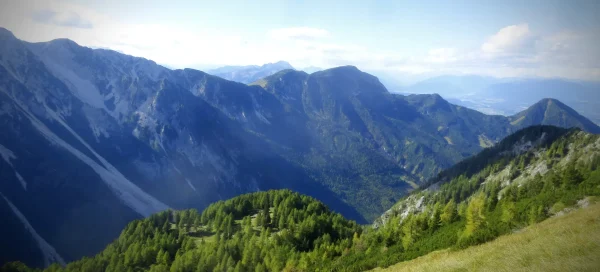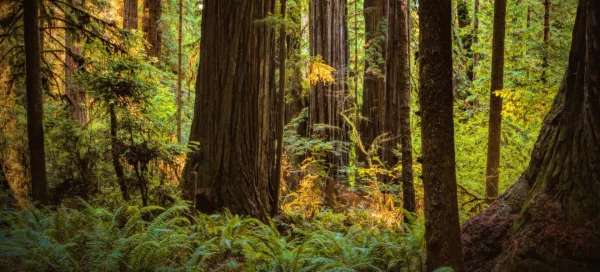Overview
The mountain goat, also known as Oreamnos americanus, is a large mammal known for its climbing agility. It is primarily found in the mountainous regions of North America, particularly in the Rocky Mountains and Cascade Range. The species is well-adapted to steep, rugged terrains and has specialized hooves that offer increased traction and grip.
Mountain goats are covered with a double layer of white fur, which provides effective insulation against the harsh climatic conditions they experience. Their long, hollow hair offers a combination of lightness and insulation, making them well-suited for both high elevations and low temperatures.
Despite their name, mountain goats are not true goats. While they share the same subfamily, Caprinae, with goats, they belong to a different genus and are more closely related to chamois and serows. Mountain goats are a unique species, distinct in their behavior and physical characteristics from the goats found in domestic settings.
Taxonomy
Kingdom
Phylum
Class
Order
Family
Genus
Species
Type
Physical Description:
Mountain goats are instantly recognizable by their long, white fur and muscular bodies. They possess two black, pointed horns that can grow up to a foot in length. These horns are present in both males and females, although the male’s horns are generally thicker.
Mountain goats are built for survival in their harsh environments. They have cloven hooves that can spread apart to improve balance and provide a better grip on steep and rocky terrain. The pads of their hooves are rubbery, which further aids in navigating the challenging landscapes they call home.

Lifespan: Wild: ~12 Years || Captivity: ~20 Years

Weight: Male: 125-180 lbs (56-82 kg) || Female: 100-155 lbs (45-70 kg)

Length: Male: 5-6 feet (1.5-1.8 meters) || Female: 4-5 feet (1.2-1.5 meters)

Height: Male: 35-45 inches (89-114 cm) || Female: 30-40 inches (76-102 cm)

Top Speed: 12 mph (19 km/h)
Characteristic:
Native Habitat:
Mountain goats adapt to life in steep, challenging terrains, primarily favoring alpine and subalpine ecosystems. Their natural habitat includes rocky outcrops and cliffs, which provide them with foraging opportunities and natural defenses against predators. Their specialized cloven hooves have a rubbery core that provides grip and sharp outer rims for cutting into rock, allowing them to easily navigate the steep, rugged terrains. The rocky environment offers an advantage over predators like wolves and bears, who find climbing such steep, precarious slopes challenging.
In these high elevations, mountain goats have developed a suite of physiological adaptations to cope with the thin air and cold temperatures. They can thrive at elevations up to 13,000 feet, often residing above the tree line where predators are less frequent and specialized vegetation is available. The high-altitude habitat is a natural barrier against many predators and competitors, allowing mountain goats to exploit a niche that few other species can inhabit. The vegetation in these altitudes is adapted to the harsh climate, like the goats themselves, providing a consistent food source throughout the year.
Climate Zones:
Biogeographical Realms:
Continents:
Countries:
Diet:
Diet & Feeding Habits:
Mountain goats have a highly specialized diet tailored to their alpine and subalpine habitats. They are primarily herbivores, focusing on various plant materials such as grasses, herbs, and shrubs. In the warmer months, their diet includes a broader selection of vegetation, including various plants’ leaves, shoots, and flowers. They employ a browsing feeding habit, meaning they selectively choose the most nutritious parts of plants to consume, maximizing their nutrient intake.
During summer, mountain goats often descend to lower elevations to take advantage of the abundant plant life available. This seasonal migration allows them to build fat reserves, sustaining them through the harsh winter months when food is scarcer. As winter approaches, these animals return to their high-altitude homes, relying on lichens and mosses for sustenance. These plants can survive the extreme cold and offer the goats a source of nutrition when other vegetation is covered in snow or simply unavailable.
Mating Behavior:
Mating Description:
Mountain goats have a specific mating season, generally in late fall or early winter, usually around November and December. During this period, males, often called billies, engage in combative behaviors to establish dominance and secure mating rights. These violent confrontations typically involve aggressive headbutting, where the males utilize their large, pointed horns as weapons. The clashes can be intense and physically demanding as each male tries to demonstrate his strength and suitability as a mate.
Nannies, the female mountain goats, are highly selective when choosing a mating partner and often opt for the most dominant males in these competitions. Following a gestation period of around 180 days, they give birth to usually one or two offspring, known as kids, in the late spring or early summer. Nannies often isolate themselves from the herd during birth to find a safe and secluded area. They will remain separated for a few days until the newborns are strong enough to travel; at this point,t they rejoin the herd, integrating their young into the group.
Reproduction Season:
Birth Type:
Pregnancy Duration:
Female Name:
Male Name:
Baby Name:
Social Structure Description:
Mountain goats usually live in small groups or herds primarily composed of females, known as nannies, and their young, known as kids. Male mountain goats, commonly called billies, tend to be more solitary and usually join these herds only during the breeding season. The social structure within these herds is relatively complex, with individuals communicating through various nonviolent means. Body posturing, vocalizations, and even scent marking are common methods for establishing social hierarchy and avoiding conflicts within the group.
Older and more experienced females often assume leadership roles within these social structures. They guide the herd to suitable feeding areas, water sources, and lookout points that offer a vantage against potential predators. During the harsh winter months, it’s not uncommon for smaller herds to congregate into larger groups as a survival strategy. This provides the animals with both warmth and enhanced protection from predators. However, these larger assemblies are generally temporary, breaking up once the season changes and food becomes more abundant.
Groups:
Conservation Status:
Population Trend:
Mountain goat populations are considered relatively stable across their native range, although they are experiencing declines in some areas. These localized decreases are usually attributed to habitat loss and human hunting. Subpopulations of particular conservation concern are under scrutiny, with various monitoring programs in place to keep track of their numbers and overall health. These focused efforts aim to address the root causes of population decline and implement strategies to reverse it.
Current estimates suggest that the wild population of mountain goats ranges from 50,000 to 100,000 individuals. However, these populations are not homogeneous and are often fragmented, leading to significant variation in population size from one region to another. Hunting is strictly regulated in most areas to ensure it doesn’t adversely affect the species’ survival. Various conservation initiatives are actively working to safeguard these remarkable animals, a quintessential part of the ecosystem in North America’s mountainous terrains.
Population Threats:
One of the primary threats facing mountain goats is the loss and fragmentation of their natural habitats, often resulting from human activities such as mining, logging, and the expansion of recreational areas like ski resorts. These activities significantly alter the landscape, creating barriers leading to isolated populations. Fragmentation can make it challenging for mountain goats to find adequate food sources or migrate seasonally, ultimately affecting their ability to sustain healthy populations. The loss of these habitats endangers the species and disrupts the delicate balance of the ecosystems they inhabit.
Competition for food resources poses another significant threat to mountain goats, especially in regions where their habitats overlap with other large herbivores like elk and deer. In these areas, mountain goats may find it difficult to obtain the nutrition they need to thrive, leading to weaker individuals and potentially smaller populations. Additionally, the effects of climate change on alpine and subalpine ecosystems are emerging as a concern. Although the full scope and long-term impacts are not yet fully understood, temperature and precipitation patterns could affect the availability of food and water, further stressing these already vulnerable populations.
Conservation Efforts:
Conservation initiatives targeting mountain goats are multifaceted, focusing primarily on habitat preservation and restoration. Strict hunting regulations have been imposed in many areas to ensure sustainable population numbers. Monitoring programs, often led by state or provincial wildlife agencies, are in place to regularly assess the health and size of mountain goat populations. These programs often involve tagging and tracking methods to collect vital data, which is then used to guide further conservation efforts.
In addition to these regulatory measures, several natural reserves and national parks within the mountain goats’ range act as refuges, providing some protection from human activities like hunting, logging, and land development. Translocation efforts have also been undertaken to reintroduce mountain goats to areas where they have previously been extirpated or where populations have severely declined. These programs aim to boost numbers and genetic diversity within isolated populations. Moreover, ongoing research is being conducted to better understand the potential impacts of climate change on these animals and their alpine and subalpine habitats to adapt conservation strategies accordingly.
Additional Resources:
Fun Facts
- Mountain goats are not true goats.
- Both males and females have horns.
- They can jump nearly 12 feet in a single leap.
- Mountain goats have a highly efficient digestive system.
- They can climb trees to access leaves.
- Their coat thickens during winter for added insulation.
- Mountain goats can thrive at altitudes up to 13,000 feet.
- They can lose up to 30% of their body weight during winter.
- Mountain goats have a keen sense of smell and hearing.
- Nannies will protect their young fiercely from predators.


















































































